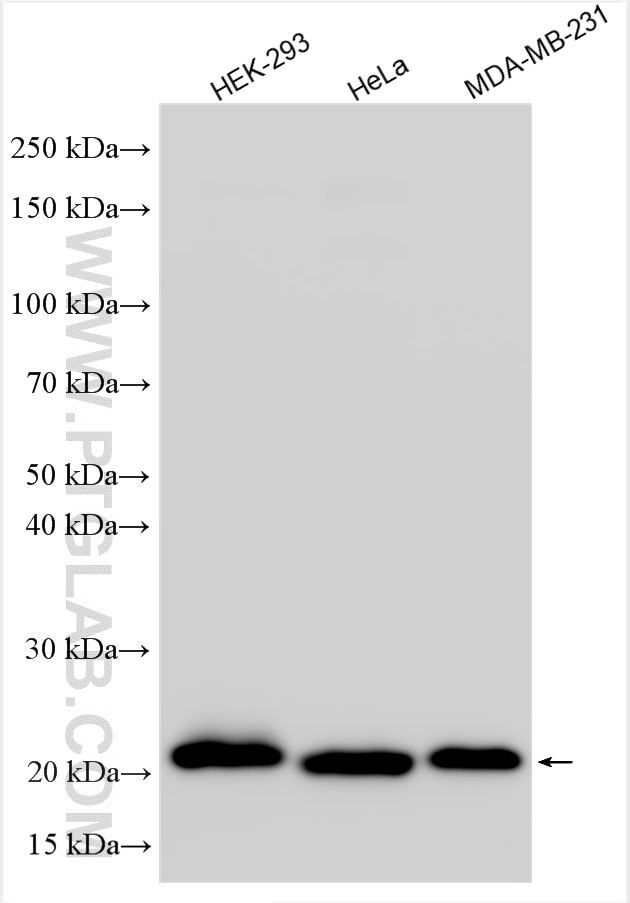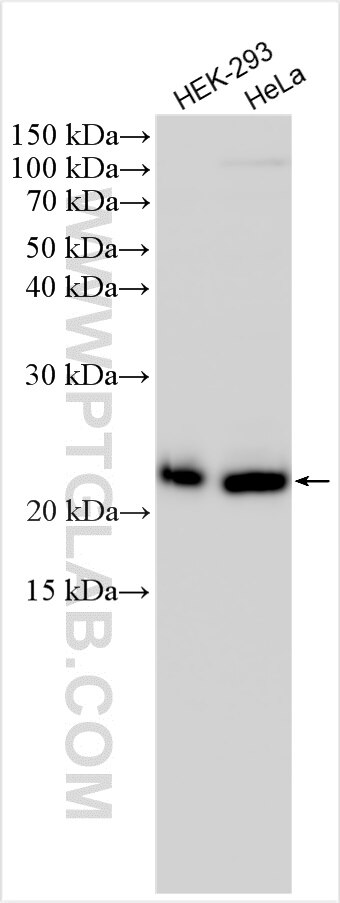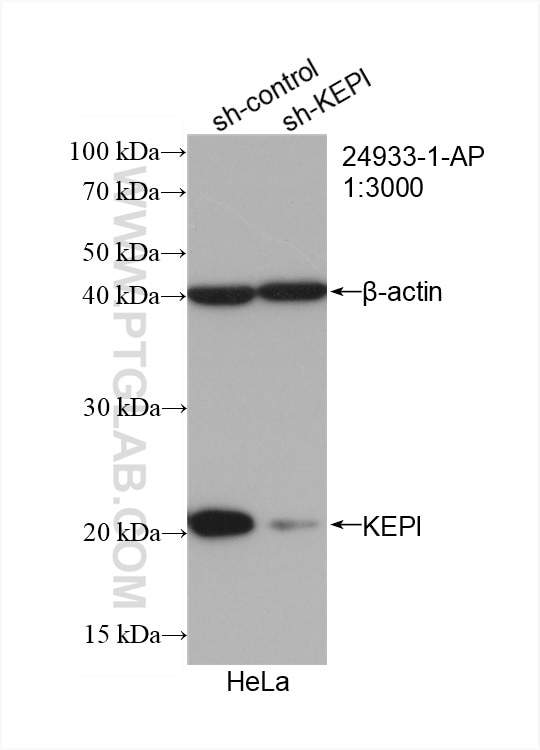- Featured Product
- KD/KO Validated
KEPI Polyklonaler Antikörper
KEPI Polyklonal Antikörper für WB, ELISA
Wirt / Isotyp
Kaninchen / IgG
Getestete Reaktivität
human
Anwendung
WB, ELISA
Konjugation
Unkonjugiert
Kat-Nr. : 24933-1-AP
Synonyme
Galerie der Validierungsdaten
Geprüfte Anwendungen
| Erfolgreiche Detektion in WB | HEK-293-Zellen, HeLa-Zellen, MDA-MB-231-Zellen |
Empfohlene Verdünnung
| Anwendung | Verdünnung |
|---|---|
| Western Blot (WB) | WB : 1:500-1:3000 |
| It is recommended that this reagent should be titrated in each testing system to obtain optimal results. | |
| Sample-dependent, check data in validation data gallery | |
Produktinformation
24933-1-AP bindet in WB, ELISA KEPI und zeigt Reaktivität mit human
| Getestete Reaktivität | human |
| Wirt / Isotyp | Kaninchen / IgG |
| Klonalität | Polyklonal |
| Typ | Antikörper |
| Immunogen | KEPI fusion protein Ag20645 |
| Vollständiger Name | protein phosphatase 1, regulatory (inhibitor) subunit 14C |
| Berechnetes Molekulargewicht | 18 kDa |
| Beobachtetes Molekulargewicht | 20-22 kDa |
| GenBank-Zugangsnummer | BC015773 |
| Gene symbol | PPP1R14C |
| Gene ID (NCBI) | 81706 |
| Konjugation | Unkonjugiert |
| Form | Liquid |
| Reinigungsmethode | Antigen-Affinitätsreinigung |
| Lagerungspuffer | PBS mit 0.02% Natriumazid und 50% Glycerin pH 7.3. |
| Lagerungsbedingungen | Bei -20°C lagern. Nach dem Versand ein Jahr lang stabil Aliquotieren ist bei -20oC Lagerung nicht notwendig. 20ul Größen enthalten 0,1% BSA. |
Hintergrundinformationen
PPP1R14C, found as a morphine‐regulated brain gene, encodes protein phosphatase 1 regulatory inhibitor subunit 14C, and is identified as a potent inhibitor of PP1. Horvath and colleagues reported that PPP1R14C inhibited the release of neurotransmitters and promoted neuronal exocytosis by retaining synaptosome associated protein 25 (SNAP25) at a phosphorylated state. Moreover, overexpression of PPP1R14C increased the phosphorylation of RB transcriptional co‐repressor 1 (RB1) to protect leukemic cells from chemotherapy.
Protokolle
| Produktspezifische Protokolle | |
|---|---|
| WB protocol for KEPI antibody 24933-1-AP | Protokoll herunterladen |
| Standard-Protokolle | |
|---|---|
| Klicken Sie hier, um unsere Standardprotokolle anzuzeigen |




